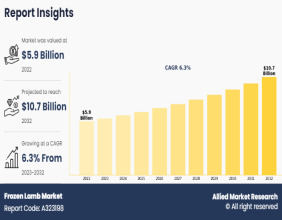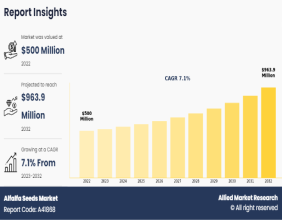Summary
- Unemployment rate rose from 6.4% in April to 7.1% in May, with about 227,000 job losses. However, latest job ads and payrolls data indicate job losses reduced during May 2020.
- Morrison urged the nation to brace up for more job losses in coming months and has rolled out stimulus measures to give the economy a push and win the war for jobs.
- The Federal government formed Job Maker Plan to boost employment and uplift businesses by strengthening industrial relations and skills sector
- Infrastructure projects will be given fast-tracked approval, while the announcement of HomeBuilder scheme in June would help in recovery of residential construction industry.
Australia’s unemployment rate soared to 7.1% in May with a loss of 227,000 jobs from 6.4% in April as per statistics released by ABS on 18 June. Economists had forecasted a job loss of 100,000 while the actual job loss turned out to be much higher. The participation rate fell further 0.7 percentage points to 62.9%, with underutilisation rate of 20.2% in May. COVID-19 slashed jobs of women and younger people in particular.
Head of labour statistics, ABS, Bjorn Jarvis stated that the decline in employment added to 600,000 in April, bringing the total plunge to 835,000 since March. About 2.3 million people were impacted through employment loss amid months of April- May 2020 or had fewer hours compared to regular ones for economic reasons during May 2020. However, latest job advertisements and payroll numbers indicate that unemployment reduced in May.
The numbers also caused heated debate on the end of JobKeeper in September and if Australians are best supported by JobKeeper or JobSeeker payments.
The government asserted, during the peak of COVID-19 that wage subsidy was needed to keep workers in their jobs and $1500 a fortnight was announced in May while JobSeeker was declared to help Australian citizens and residents who have lost their jobs and incomes.
In April this year, JobSeeker was also enlarged to $1100 a fortnight due to addition of coronavirus supplement and is scheduled to halve back to its pre-coronavirus level from late October. However, Morrison has now indicated that the welfare system will help Australians get back into real jobs.
Morrison not surprised by unemployment numbers
Morrison was not surprised by the figures related to employment losses and accounted them as effects of coronavirus pandemic. He stated that it would take about 2 years to get back to pre-coronavirus levels and more than 5 years to reach the targeted figure.
On 15 June, PM Scott Morrison admitted that some workers who are receiving wage subsidies will be slip into joblessness when JobKeeper programme stops.
Currently, there are about 1.6 million Australians gaining JobSeeker benefits, while 3 million are getting JobKeeper payments from their employer. Morrison stated that maintaining wage subsidies and other assistance for a longer time would hurt the strong growth the country wants amid coronavirus crisis.
Christian Porter, Minister of Industrial Relations, commented on Morrison’s speech by stating that it would not be right to believe that everything can move back to same position as before coronavirus outbreak, by September end. Few jobs that are supported by JobKeeper at present will not sustain in the long-run, and there will be a shift between JobKeeper and JobSeeker at some point.
ALSO READ: Weekly Roundup on Economic Front: Trends Shaping Future Developments
JobKeeper scheme which is supposed to end in September is due for review and will be declared on 23 July.
While addressing the nation on 26 May, PM Scott Morrison stated that a plan was in the making whose purpose would be to get Australian businesses out of ICU.
He asserted on helping businesses to pull the nation’s way out of coronavirus, which implies centring on things that can help Australian companies run more rapidly. In a block of speech, reports surfaced about establishing a Job Maker plan to boost employment helping in Australia’s recovery.
JobMaker plan for encouraging employment
Under the plan, 5 working groups would be set up including of government, unions and businesses who will focus at industrial relations reforms.
Morrison plans to rework industrial relations as part of his post-pandemic thrust. The current system does not manage the relationship between employers and unions appropriately arguing that both have given in to tribalism, conflict, and ideological posturing.
He added that the system had sunk into contentment of unions looking for marginal benefits and employers shutting down risks by not hiring anyone. The system at present is not fit for purpose majorly because of the job challenges the country is confronting at present. Morrison asserted that having constructive meetings between employers and unions, declaring planned union-busting laws would be set aside as an indication of good faith.
The plan also comprises of ‘a shovel ready’ list of 15 major infrastructure projects that will be fast-tracked to reduce the time needed in approvals. Morrison also stated that the decision would help more than 66,000 direct and indirect jobs. Projects included $10 billion inland rail projects from Melbourne to Brisbane, a 2nd underwater power cable to Tasmania, emergency town water projects in New South Wales, etc.
Morrison asserted on a much easier skills education and training sector alleging that it differed extensively across the country. JobMaker Plan would include bolstering of the federal funding for vocational training. The funding contracts with states and territories that see the government transferring $1.5 billion per year without supervision was flawed and had to change. The funding was earmarked for the state governments to put in skills and training to secure jobs.
ALSO READ: 3 Signs you should look around Economic Recovery
He asserted that perplexing and conflicting vocational education system was resulting in many people go to university even if it was not well suited for their opted careers. Hence, Morrison stressed on the need for targeting funding to strengthen skills the job market wants, streamline the system, and increase the level of homogeneity amongst states and territories.
Home Builder scheme to recover residential construction
Earlier in June, the other major package announced was Home Builder scheme which aims to provide $25,000 grants to assist residential construction industry in recouping from coronavirus crisis. Eligible owner-occupiers, including first home buyers, will get paid to build new homes or renovate existing ones under the scheme. The agreement must be signed between 4 June and 31 December 2020, with the condition that construction must start within 3 months of contract date.
The HomeBuilder will add to various active grant schemes implying one can get more than double the grant contingent on his/her location. However, the programme has been criticised on strict eligibility criteria and limited time frame, which will rule out many people from availing benefit of the scheme.
With introduction of many stimulus packages in short span of time, there remains considerable uncertainty about working of programmes and the way schemes would benefit Australians.




